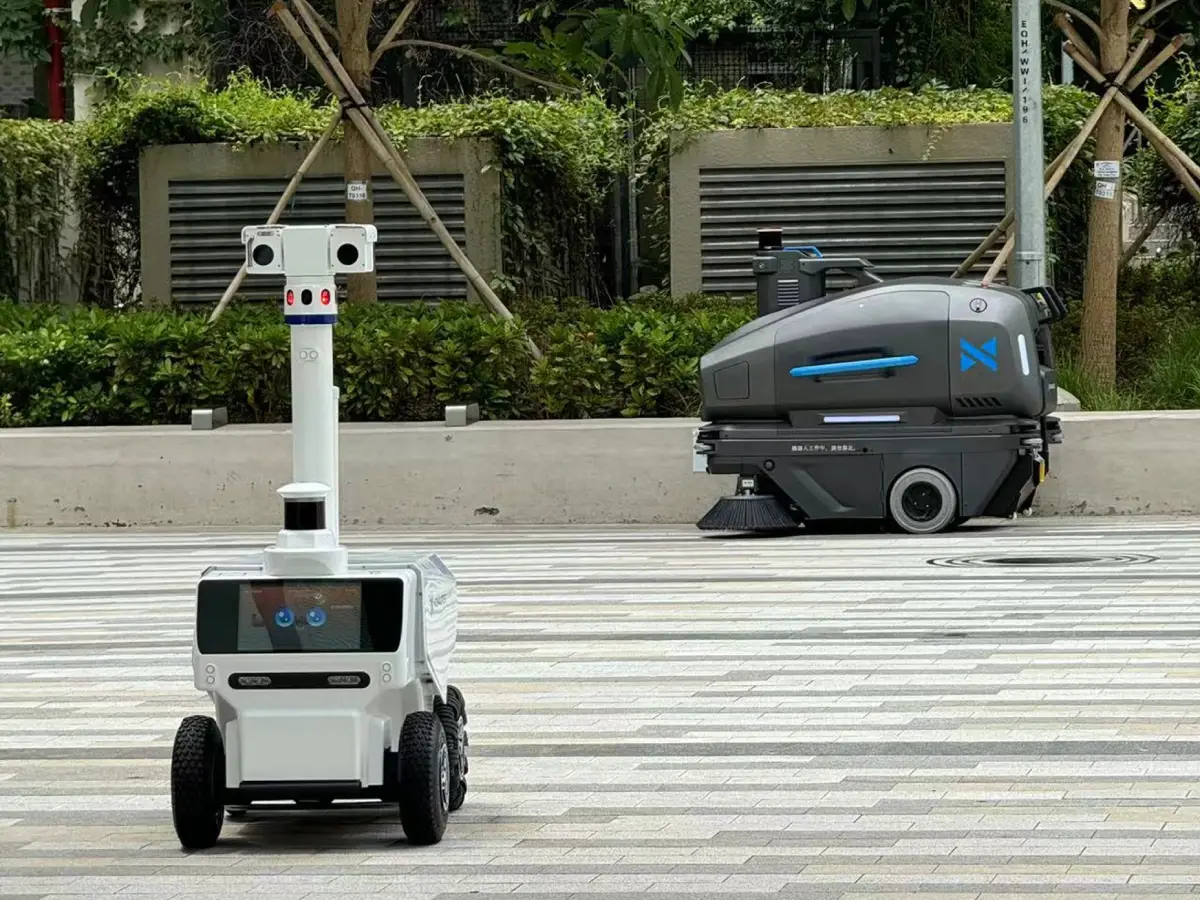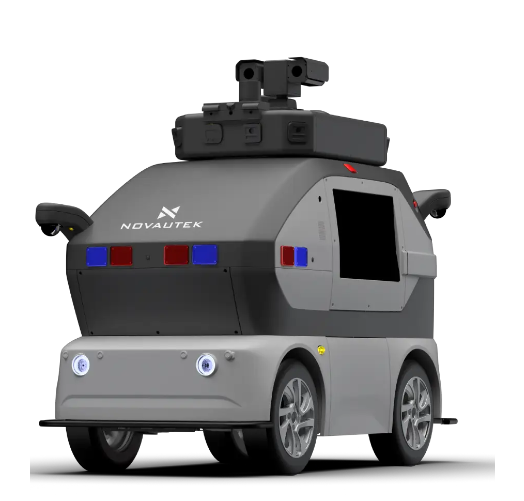Revolutionizing Warehouse Operations with Automated Transport Solutions
The modern warehouse landscape is undergoing a dramatic transformation, with transport robots emerging as key players in this evolution. These sophisticated machines are redefining how materials and goods move within smart warehouse environments, bringing unprecedented levels of efficiency and accuracy to logistics operations. As businesses face increasing pressure to optimize their supply chain operations, transport robots have become indispensable tools for maintaining competitive advantage in the fast-paced world of warehouse management.
The integration of transport robots into warehouse operations represents a significant leap forward in automation technology. These intelligent machines navigate warehouse floors autonomously, efficiently moving materials from one point to another while seamlessly coordinating with other automated systems. The impact of this technology extends far beyond simple material handling, creating ripple effects throughout the entire supply chain ecosystem.
Core Components of Warehouse Transport Robotics
Navigation and Sensor Systems
Transport robots rely on advanced navigation systems to move safely and efficiently through warehouse environments. These systems typically combine multiple sensors, including LIDAR, cameras, and ultrasonic sensors, to create a comprehensive understanding of their surroundings. The sophisticated sensor array enables transport robots to detect obstacles, identify optimal paths, and adjust their routes in real-time.
Machine learning algorithms process the input from these sensors, allowing transport robots to make split-second decisions about movement and path planning. This capability ensures safe operation around human workers while maintaining optimal efficiency in goods transportation. The continuous improvement of these navigation systems has made transport robots increasingly reliable and adaptable to dynamic warehouse environments.
Payload Management Systems
The effectiveness of transport robots largely depends on their ability to handle various payload types efficiently. Modern transport robots feature advanced payload management systems that can adapt to different load sizes, weights, and configurations. These systems incorporate precision lifting mechanisms, weight sensors, and stability control features to ensure secure handling of materials.
Smart payload management extends to the robot's ability to optimize load distribution and maintain balance during movement. This sophisticated approach to cargo handling significantly reduces the risk of accidents while maximizing the volume of goods that can be transported in a single trip.

Integration with Warehouse Management Systems
Real-time Communication Protocols
Transport robots operate as part of a larger warehouse ecosystem, requiring seamless integration with existing warehouse management systems (WMS). Advanced communication protocols enable real-time data exchange between transport robots and the central control system, ensuring coordinated operation and optimal resource allocation.
These protocols facilitate immediate updates on inventory movement, robot status, and task completion, allowing for dynamic adjustment of warehouse operations. The integration of transport robots with WMS creates a responsive and adaptive environment where resources are allocated efficiently based on current needs and priorities.
Task Optimization Algorithms
The efficiency of transport robots is maximized through sophisticated task optimization algorithms. These algorithms analyze multiple factors, including warehouse layout, current workload, priority levels, and resource availability, to assign tasks in the most efficient manner possible. The result is a highly optimized operation where transport robots work in harmony to achieve maximum throughput.
Machine learning capabilities enable these algorithms to continuously improve their performance by learning from past operations and adapting to changing warehouse conditions. This dynamic optimization ensures that transport robots maintain peak efficiency even as warehouse operations evolve.
Impact on Warehouse Efficiency
Operational Speed and Accuracy
The introduction of transport robots has led to significant improvements in warehouse operational metrics. These automated systems operate consistently at optimal speeds, maintaining accuracy levels that surpass manual operations. Transport robots can work continuously without fatigue, resulting in increased throughput and reduced error rates.
Studies have shown that warehouses implementing transport robots typically experience a 200-300% increase in picking efficiency and a significant reduction in order fulfillment errors. This dramatic improvement in performance directly translates to enhanced customer satisfaction and reduced operational costs.
Resource Optimization
Transport robots contribute to better resource utilization within the warehouse environment. By handling routine transportation tasks, these robots free up human workers to focus on more complex activities that require critical thinking and decision-making skills. This optimization of human resources leads to improved overall warehouse productivity.
Additionally, transport robots help minimize energy consumption through efficient path planning and coordinated movement patterns. The reduction in energy usage, combined with optimized labor allocation, results in significant cost savings for warehouse operations.
Future Developments and Trends
Advanced AI Integration
The future of transport robots lies in enhanced artificial intelligence capabilities. Emerging developments in AI technology promise to make these robots even more autonomous and adaptive. Future generations of transport robots will feature improved decision-making capabilities, enabling them to handle increasingly complex warehouse scenarios with minimal human intervention.
AI-driven predictive maintenance systems will also become more sophisticated, allowing transport robots to anticipate and prevent potential issues before they impact operations. This proactive approach to maintenance will further increase the reliability and efficiency of automated warehouse systems.
Enhanced Collaboration Features
The evolution of transport robots includes improved human-robot collaboration capabilities. Next-generation systems will feature more intuitive interfaces and enhanced safety features, making it easier for human workers to interact with and direct robot activities. These developments will create more flexible and responsive warehouse environments.
Future transport robots will also demonstrate improved swarm intelligence, enabling better coordination between multiple units for complex tasks. This advanced level of collaboration will result in even greater efficiency gains in warehouse operations.
Frequently Asked Questions
What maintenance requirements do transport robots have?
Transport robots require regular maintenance to ensure optimal performance, including routine software updates, sensor calibration, and mechanical inspections. Most systems include built-in diagnostic capabilities that help identify potential issues before they become problems, and manufacturers typically provide comprehensive maintenance schedules and support services.
How do transport robots handle power management?
Modern transport robots utilize sophisticated power management systems, including automatic charging stations and smart battery monitoring. They are programmed to dock at charging stations during low-demand periods and can typically operate for 8-12 hours on a single charge, depending on workload and environmental conditions.
What safety features are built into transport robots?
Transport robots incorporate multiple safety features, including emergency stop systems, obstacle detection sensors, and speed control mechanisms. They are designed to operate safely alongside human workers, with sophisticated algorithms that ensure appropriate spacing and movement patterns in shared spaces. Regular safety certifications and updates ensure compliance with industry standards.

